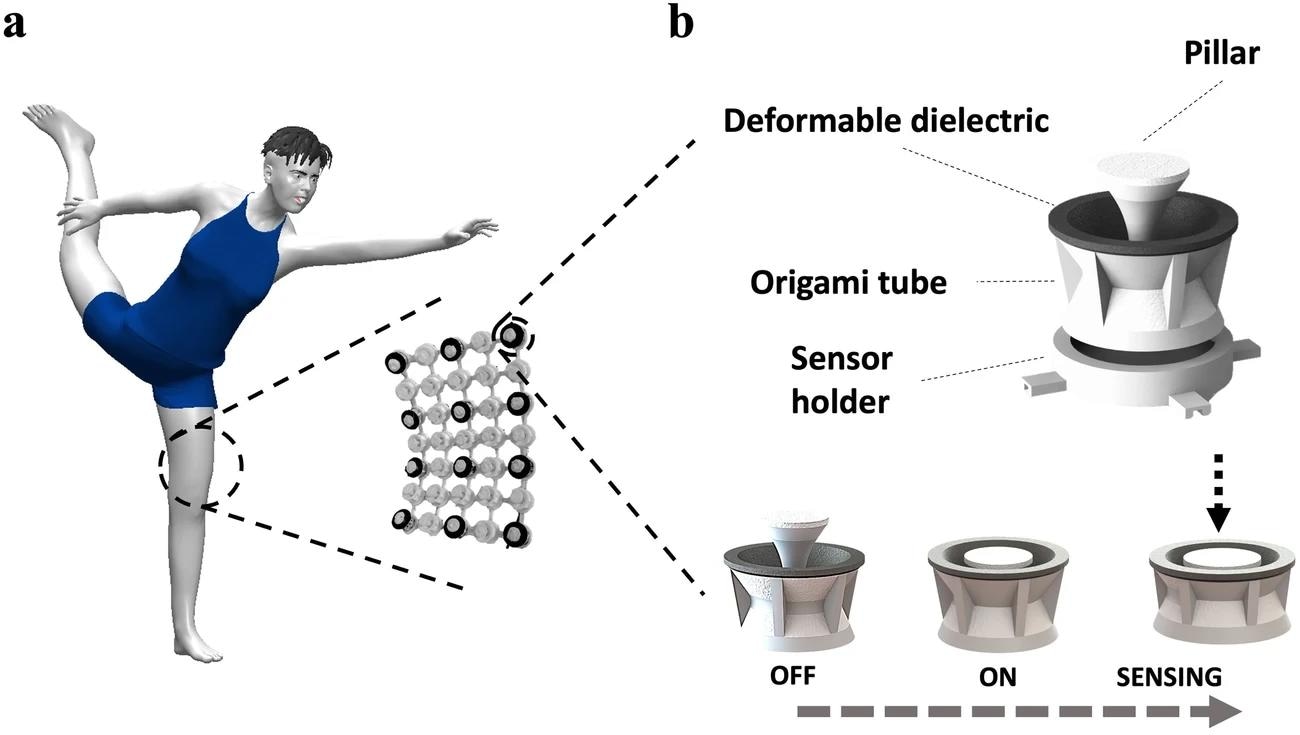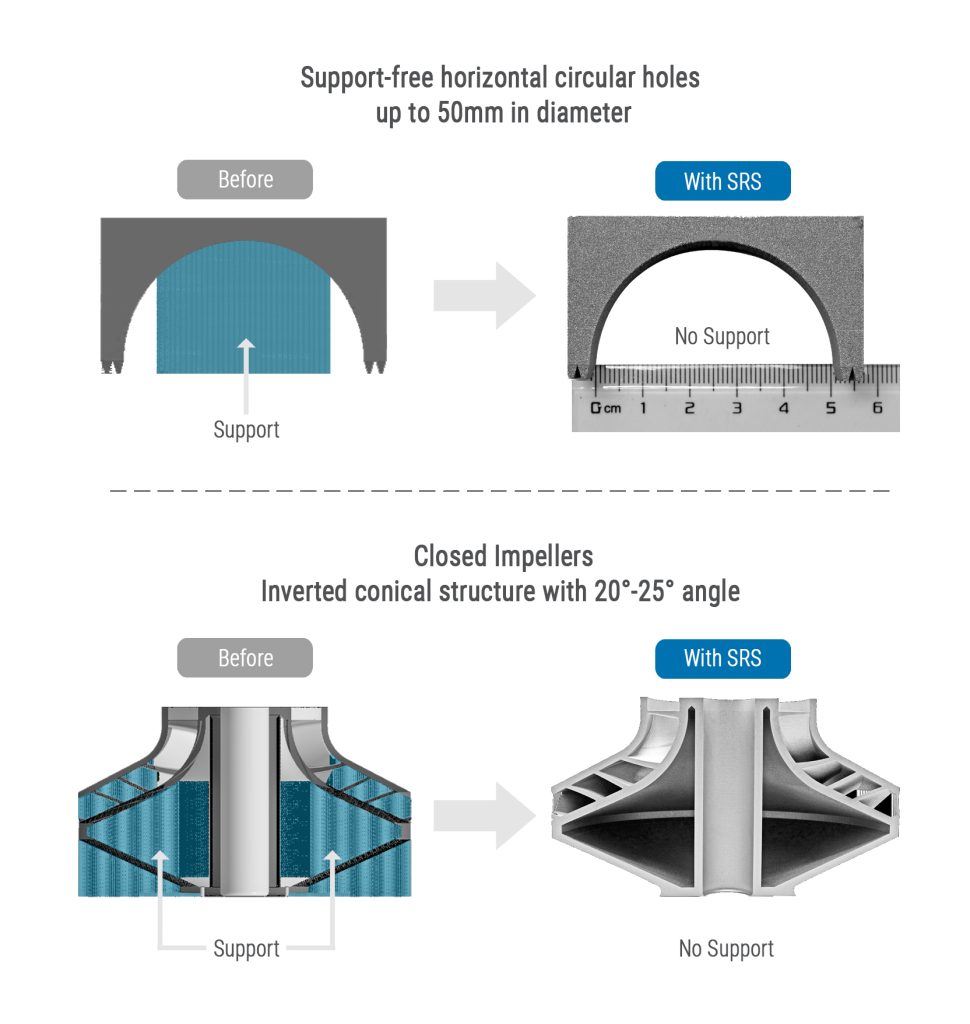A current research revealed in npj Versatile Electronics proposes a wi-fi stress monitoring system utilizing a 3D-printed origami stress sensor array. It’s geared up with customizable structure sensors to beat the boundaries of current industrial stress mats. This cost-effective and adaptable stress monitoring system can work within the 70 to 2500 kPa stress vary.

Background
Stress monitoring is crucial for people in bodily demanding circumstances reminiscent of laborers, athletes, and elders. Stress knowledge acquired via monitoring techniques and sensors can be utilized to establish biomechanical abnormalities, design ergonomic insoles for footwear, and improve sports activities coaching.
Lately, quite a few efforts have been made to plot wearable stress monitoring techniques with enhanced efficiency, measured when it comes to detection vary, sensitivity, linearity, sturdiness, and response time. Combos of varied versatile substrates (for sensing) and conductive supplies (for electrodes) have been explored to optimize these parameters and develop piezoresistive, piezoelectric, and triboelectric stress sensors. Nevertheless, the present industrial stress sensors are constrained by measurement and sensing accuracy points.
The selection of fabrication approach additionally influences sensor efficiency. The widespread manufacturing strategies for stress sensors are labeled as force-based, electrical field-assisted, and light-assisted fabrication. These contain a number of advanced steps and require specialised gear and managed clear room environments, which will increase the ultimate system value. Furthermore, when a stress monitoring mat is broken, your entire system wants substitute. Thus, the researchers on this research used 3D printing to manufacture a versatile stress sensor array with a pillar-origami construction.
Stress Monitoring System Fabrication
The researchers employed twin nozzle fused deposition modeling (FDM) 3D printing expertise, which permits simultaneous manufacturing of the sensor’s versatile construction and electrodes in a single step. Firstly, a 3D mannequin of the sensor was ready utilizing Strong Works 2022 software program, which includes two foremost parts: array and items. A fused filament fabrication 3D printer was used to print the array and items, adopted by the meeting of dummy/sensing items into the array.
Since this research aimed to plot a capacitive stress sensor, a separate dielectric construction was ready together with the bottom. The twin-structure design consisted of an origami tube bolstered with ribs and a central pillar. Furthermore, the applying of minimal stress on the sensor deforms its dielectric construction (after buckling of the pillar and origami half) and alters its capacitance. Human pores and skin was employed as one of many electrodes utilized in capacitance measurement to mitigate the human physique’s impact on system capacitance.
Two stress mapping mat units have been designed and assembled utilizing the proposed technique: a 150 × 150 mm foot stress mapping system and a 150 × 100 mm array for sports activities functions. Every system consisted of a stress mat, a reference electrode, a knowledge acquisition board, and a 5 V energy financial institution for the info acquisition board. A MATLAB script was used to obtain wi-fi knowledge from the info acquisition board and contour plot the sensing knowledge.
The efficiency of each units was evaluated in real-like circumstances. As an illustration, the foot stress mapping system was employed to report the stress contour utilized to the human foot (in 4 distinct postures) throughout bodily actions. One other system was positioned contained in the protecting pad of an athlete to measure the influence forces skilled throughout sporting actions.
Outcomes
The proposed stress sensor with pillar-origami construction supplied exact stiffness management, successfully filtering pores and skin deformations and enabling capacitive stress sensing. The proposed architectural design reveals a finely tunable stress measurement vary from 70 to 2500 kPa with sensitivity between 0.01 kPa-1 and 0.0002 kPa-1 and a response time of solely 800 milliseconds. Moreover, your entire system is transportable and stress mapping might be monitored in real-time and on-line.
Form programmability is an important function of the fabricated 3D stress sensor as its mechanical properties might be managed by various the geometrical parameters. Thus, the stress vary and sensitivity of the system might be optimized by various the origami tube thickness, origami folding angle, pillar diameter, hole between the higher floor of the pillar and origami tube, and the variety of supporting ribs.
The FDM 3D printing expertise used within the research resolves adhesion points typically encountered in multi-layer sensors. It permits modification of the size, form, and determination of the stress mat in response to the person’s specs. As well as, the modular sensor array built-in into the stress monitoring system facilitates straightforward upkeep.
Conclusion
Total, this paper efficiently demonstrated a wi-fi stress monitoring mat that may overcome the adaptability and accuracy points within the current stress sensors. In case of harm throughout the sensor array, it’s potential to exchange particular person sensing items as an alternative of your entire system, making system upkeep economical and sustainable together with prolonged operational performance.
With potential functions in wi-fi foot stress mapping and sports activities safety pads, the proposed stress monitoring system generally is a vital milestone within the improvement of versatile and customizable stress sensor expertise.
Journal Reference
Moeinnia, H., Agron, D. J., Ganzert, C., Schubert, L., & Kim, W. S. (2024). Wi-fi stress monitoring system using a 3D-printed Origami stress sensor array. npj Versatile Electronics, 8(1), 1–8. https://doi.org/10.1038/s41528-024-00309-z, https://www.nature.com/articles/s41528-024-00309-z


